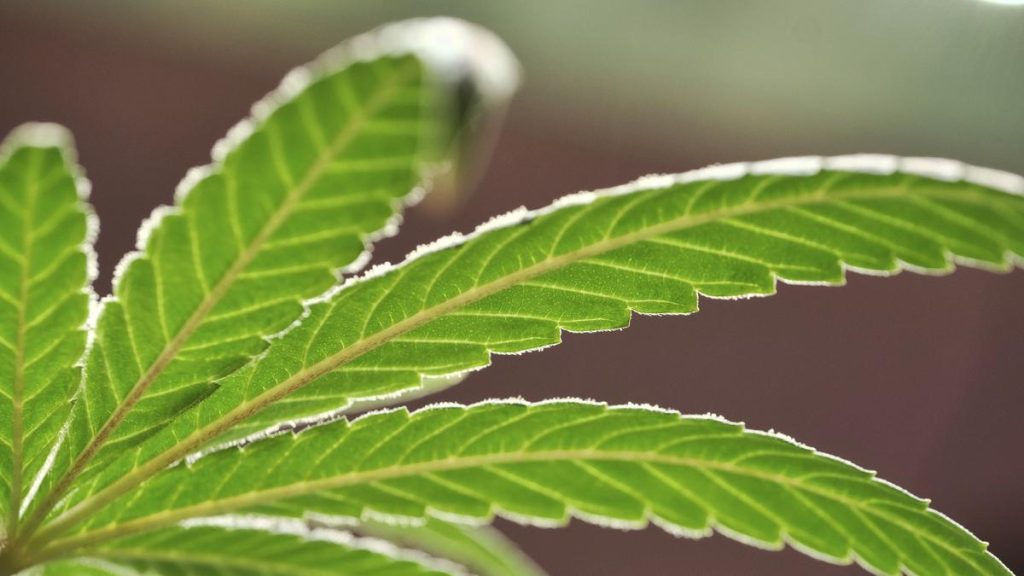
A marijuana leaf on a plant. File photograph
| Photo Credit: AP
A team of researchers from Bengaluru-based NIMHANS have developed ‘Pre-CURB’, a digital learning resource for young people on preventing cannabis use and promoting responsible behaviour.
This digital resource, released at a workshop conducted for college students by the Departments of Nursing and Mental Health Education on February 11, details the adverse health effects of cannabis, busts misconceptions with regard to its use, gives updates on the legal status of cannabis in India, and explains how young people can avoid cannabis use.
Researchers at NIMHANS, Bengaluru, have developed a resource that details the adverse health effects of cannabis.
| Video Credit:
NIMHANS
The rising use of cannabis and several of its products has become a global concern. According to the World Health Organization (WHO), this phenomenon has become more closely linked to youth culture, with the age of initiation usually being lower than that of other drugs.
In India, cannabis (known in the vernacular as ganja or bhang) holds cultural significance because of its use during festivals and rituals even though its use is illegal. Cannabis use rates ranging from 6.8% to 36% have been reported among college students in India, with poor academic performance, dropping-out, and cognitive impairment impacts, said Meena K.S. professor and head of the Department of Mental Health Education at NIMHANS.
In 2024, the same team of researchers at NIMHANS found that the risk perception about cannabis use among college students surveyed in Bengaluru was very low. The study, aimed at assessing college students’ knowledge, attitude, and expectancies towards the use of cannabis, was published in the Indian Journal of Psychological Medicine.

What Pre-CURB contains
The Pre-CURB digital resource was developed by Kannan K. from the College of Nursing under the guidance of Prasanthi Nattala, professor and head of the Department of Nursing, Jayant Mahadevan, assistant professor of Psychiatry, and Dr. Meena.
It is based on inputs from focus group discussions conducted among college students, an extensive review of the literature, and inputs provided by experts working in the area, said Dr. Nattala.
“Pre-CURB is organised into three sections. The first section details the adverse health effects of cannabis, with specific reference to adverse impact on cognitive functions, driving impairment, and damage to major body systems. It also provides an update on the legal status of cannabis in India,” she said.
While the second section busts popular misconceptions with regard to cannabis use, such as the belief that cannabis is safer compared to tobacco, cannabis cannot cause addiction, etc., the third section explains how young people can avoid cannabis use by dealing with various use triggers and practising a healthy and responsible lifestyle. This can be done through building and nurturing family and social support networks, making positive personality changes, and experiencing pleasure without cannabis, she said.
What are the health effects of cannabis use?
Cannabis is by far the most widely cultivated, trafficked and abused illicit drug. Half of all drug seizures worldwide are cannabis seizures. The geographical spread of those seizures is also global, covering practically every country of the world.
About 147 million people, 2.5% of the world population, consume cannabis (annual prevalence). An analysis of cannabis markets shows that low prices coincide with high levels of abuse, and vice versa.
Cannabis impairs cognitive development (capabilities of learning), including associative processes; free recall of previously learned items is often impaired when cannabis is used both during learning and recall periods.
Cannabis impairs psychomotor performance in a wide variety of tasks, such as motor coordination, divided attention, and operative tasks of many types.
Chronic health effects include development of a cannabis dependence syndrome; exacerbating schizophrenia in affected individuals; epithelial injury of the trachea and major bronchi; airway injury, lung inflammation, and impaired pulmonary defence against infection.
Source: WHO
Holistic approach
As health and wellness comprise both physical and mental well-being, the workshop adopted a holistic approach with didactic interactive sessions for the students from a team of multi-disciplinary experts at NIMHANS.
They addressed a range of topics such as prevention of non-communicable disorders, stress management, physical fitness, sleep and rest, healthy eating, as well as a session on the information-education-communication resources available at NIMHANS, which the youth can use to raise health awareness in society, the doctor explained.
The digital resource will be available on the NIMHANS website soon, the researchers said.
Published – February 13, 2025 09:51 am IST

